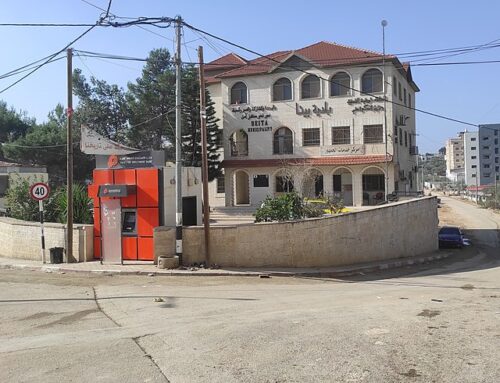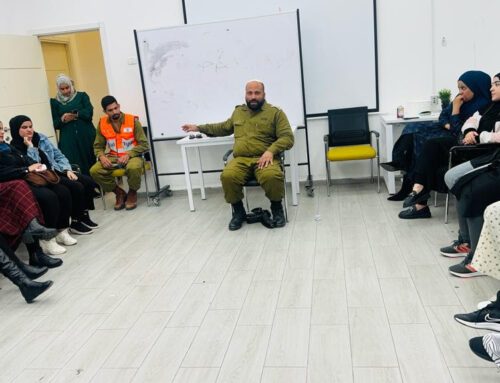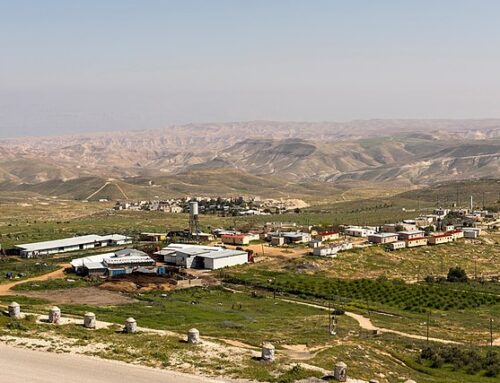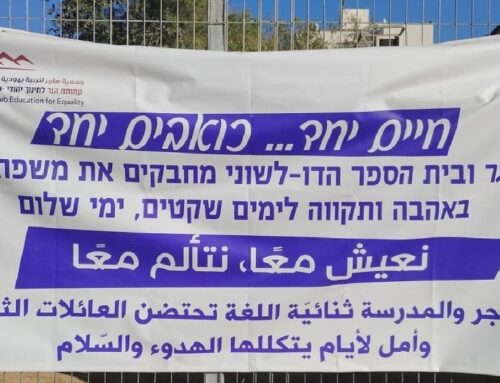A choice of models
Sometimes it’s hard not to look at the current Palestinian factional fighting as a microcosm of the overall Israeli-Palestinian conflict. So many of the elements are there: the tit-for-tat escalation of rhetoric and violence, the intransigence of both parties in compromising their power and ideology, the factional indiscipline that prevents truces from lasting long enough to become self-sustaining, the constant degeneration of peace talks into bickering over petty details. I suppose it’s only natural that this should be so; like the conflict between Zionism and Palestinian nationalism, the power struggle between Hamas and Fatah stems from competing nationalist visions for the future of the same land. Civil wars are the most bitter of conflicts, and both the intra-Palestinian fighting and the battle between Palestine and Israel bear many of the stamps of civil war.
By now, the events that triggered the present round of violence should be familiar. On December 11, in an atmosphere already fraught with tension after national-unity talks collapsed, gunmen sprayed the car of Fatah-affiliated intelligence official Baha Balousheh with bullets, killing his three young children and sparking a firestorm of rage. Although the identity of the gunmen has yet to be ascertained, Fatah supporters immediately blamed Hamas for the attack, and responded with retaliatory strikes including an attack on a Hamas rally in Ramallah and a possible assassination attempt on Prime Minister Ismail Haniyeh.
On Saturday, amid the rising violence, President Mahmoud Abbas announced that he intended to dissolve the Hamas-dominated parliament and call fresh presidential and parliamentary elections. This isn’t something that he has the power to do: the PNA Basic Law allows the president to dismiss the prime minister but not to dissolve the legislature, and requires even his own resignation to be approved by a two-thirds majority of parliament. Although he justified it as a necessary measure to end factional infighting, Hamas was quick to describe it as a coup attempt, and indeed, the doctrine of necessity is most often used to justify coups. Alberto Fujimori, also faced with civil disturbance, would view Abbas as a kindred spirit.
Whatever Abbas’ reason for making this announcement – whether he intended to strong-arm Hamas into resuming talks on a unity government, or whether he genuinely believed new elections were the only way out of the crisis – it had the effect of bringing matters to a head. On Sunday, after another attempted hit on foreign minister Mahmoud a-Zahar, the two sides called a truce with terms that included an end to incitement and resumption of unity negotiations. The same indiscipline that has stymied Israeli-Palestinian ceasefires also dogged this one, however; a number of the Fatah-affiliated militant groups refused to accept the truce, Hamas responded in kind, and today full-scale fighting broke out on the streets of Gaza. At least five people have been killed – three slain in battle, and two kidnapped and executed by Hamas – and the governments of Jordan and Egypt suddenly found themselves taking time out of Israeli-Palestinian peacemaking to put out the Gaza fire.
As I argued in the opening paragraph, there are distinct parallels between the factional fighting and the larger regional conflict, and it’s hard to escape the thought that they might end the same way. Although all sides are now professing their commitment to a ceasefire and negotiated settlement, there’s neither a mechanism nor a sufficient level of mutual trust to achieve one, and it doesn’t seem that either party has yet given up its dream of total victory. The result, as in other places, may be an ongoing stalemate with neither side able to win a military victory but both seeing no readily available alternative. In such a war, there is no victor and no vanquished, but in the worst possible way: rather than becoming a basis for a peace settlement, the inability of either side to win a decisive victory degenerates into an endless low-level bloodletting powered by the cruel force of inertia.
But the fighting also carries echoes of another, and paradoxically more hopeful, model: opening stages of the Irish Civil War. I’m aware that comparisons only go so far, especially across cultures and continents, but the situation in Ireland at the end of 1921 bears more than a passing resemblance to that in Palestine now. The Irish were in the final stages of a bloody and inconclusive independence struggle, and were faced with the choice of fighting on or accepting a partition of their country. Like the Palestinians, they were divided into a number of militant factions, not all of which answered to the provisional government and which were sharply different in their ideology and goals. The result was a year of factional fighting between the pro- and anti-Treaty forces, which was distinguished not only by its bitterness but by the use of unconventional tactics and the concentration of fighting within the political class.
It’s hard to miss the echoes of that war within the current Palestinian political class. Faced with the prospect of statehood on less than ideal terms and disputes over the allocation of domestic power, the bitterness between the “pro-Treaty” Fatah leadership and the Hamas “Republicans” is escalating, and each has become the other’s target. The raids, street gunbattles and kidnap-executions happening in Gaza now wouldn’t have been out of place in Dublin in 1923 and, like the earlier conflict, the political leaders of both sides are the ones at the greatest risk. The situation seems as much poised to replicate the Irish conflict as the intifada.
It may seem strange to describe the Irish civil war as a “more hopeful” model, given the bloodletting and atrocities that occurred during that conflict. But in contrast to the endless stalemate of the Israeli-Palestinian conflict, the Irish factional fighting resulted in the political class becoming as war-weary as the public, and ultimately led to a general amnesty and the conclusion of a stable peace. The civil war didn’t end the conflict entirely, and its loose ends came back to bite both sides on many occasions during the next three generations, but it resulted in an arrangement under which the Irish could get on with their lives and eventually cooperate in settling the future of Northern Ireland. If the Palestinian infighting also ends in consolidation of the pro-Treaty forces – and, by the end of the Irish civil war, even the Republicans acquiesced in the Treaty – then it might be possible to build something from the ashes.






Leave A Comment